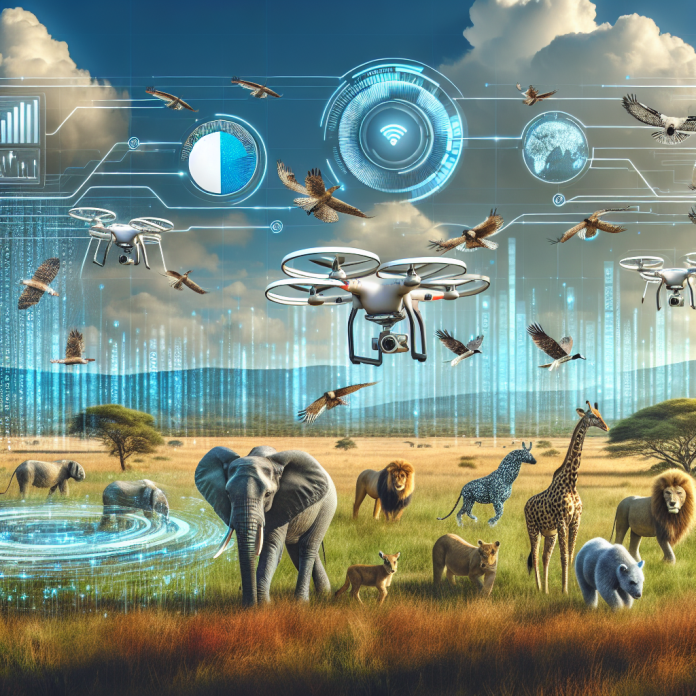Artificial Intelligence for Wildlife Conservation: The Future of Protecting Our Planet
In a world where human activities are driving countless species to the brink of extinction, technology is emerging as a powerful tool for conservation efforts. One of the most groundbreaking advancements in this regard is the use of Artificial Intelligence (AI) to safeguard wildlife and their habitats. From tracking endangered animals to combating poaching, AI is revolutionizing the way we protect our planet’s most vulnerable inhabitants.
### The Power of AI in Wildlife Conservation
AI is a branch of computer science that simulates human intelligence processes using machines. Through the use of algorithms and machine learning, AI systems can analyze vast amounts of data to identify patterns, make predictions, and even learn from experience. When applied to wildlife conservation, AI has the potential to transform the field in numerous ways.
One of the key strengths of AI is its ability to process and analyze large amounts of data quickly and accurately. This makes it an invaluable tool for tracking and monitoring wildlife populations. For example, conservationists can use AI-powered drones equipped with cameras to survey vast tracts of land from above, enabling them to count and identify animals in a fraction of the time it would take with traditional methods.
### Real-Life Applications of AI in Wildlife Conservation
The potential of AI in wildlife conservation is already being realized in various real-world projects around the globe. In Africa, the nonprofit organization Wildbook is using AI to track individual animals by their unique markings, such as stripes or spots. By analyzing thousands of images from camera traps and citizen scientists, the AI system can match new sightings with existing records, helping researchers monitor populations and detect changes over time.
In Southeast Asia, AI is being used to combat the illegal wildlife trade. Trafficking in endangered species is a multibillion-dollar industry that poses a major threat to biodiversity. By analyzing social media posts and online forums, AI algorithms can identify potential traffickers and monitor the movement of wildlife products, enabling law enforcement agencies to intercept illegal shipments and bring perpetrators to justice.
### Challenges and Limitations of AI in Wildlife Conservation
While AI holds great promise for wildlife conservation, it also presents a number of challenges and limitations. One of the main concerns is the potential for bias in AI algorithms, which can lead to inaccurate or unfair results. For example, a system trained on data from certain regions or species may struggle to accurately identify individuals from other areas or populations. To address this issue, researchers are working to develop more diverse and inclusive training datasets that reflect the full range of biodiversity.
Another challenge is the need for collaboration and coordination among stakeholders in the conservation community. AI systems require access to large amounts of data, which may be spread across multiple organizations and institutions. Establishing data sharing agreements and protocols for data collection, storage, and analysis is essential to ensure that AI can be used effectively for conservation purposes.
### The Future of AI in Wildlife Conservation
Looking ahead, the future of AI in wildlife conservation looks bright. As technology continues to advance, AI systems are becoming increasingly sophisticated and versatile. Researchers are exploring new applications of AI, such as predicting the impact of climate change on wildlife populations, identifying optimal locations for protected areas, and designing more effective strategies for habitat restoration.
In addition to its practical applications, AI is also helping to raise awareness and inspire action on behalf of endangered species. By using AI to create compelling visualizations and interactive experiences, conservationists can engage the public in ways that traditional methods cannot. For example, virtual reality simulations allow users to immerse themselves in the natural world and witness the challenges faced by wildlife firsthand, fostering empathy and a sense of urgency to protect our planet’s biodiversity.
### Conclusion
In conclusion, AI is a powerful tool that has the potential to revolutionize wildlife conservation. By harnessing the capabilities of AI systems, conservationists can monitor wildlife populations more efficiently, combat illegal activities such as poaching and trafficking, and inform evidence-based decision-making to protect our planet’s biodiversity for future generations. While there are challenges and limitations to overcome, the opportunities presented by AI in wildlife conservation are vast and exciting. As we continue to innovate and collaborate, AI will play an increasingly important role in safeguarding the natural world and preserving the incredible diversity of life on Earth.

